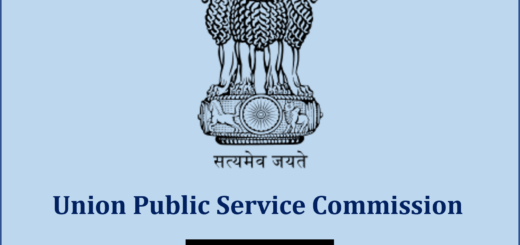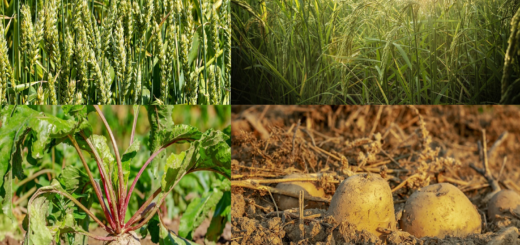PRO-PEOPLE MOVEMENTS OF KARNATAKA
Summary of pro people movement of karnataka
Solved exercise of pro-people of Karnataka

Summary
ENVIRONMENT MOVEMENTS
The living beings on this Earth need to depend on the light, air, water and other material for their survival. Human beings like other animals, need to depend on these for their survival
In their journey to become more and more civilized, human beings are killing nature to fulfill their unlimited desire.
In spite of realizing nature as a wonder to be appreciated, they are using nature only as raw material.
The living and the non-living form the environment
Industrial revolution, trade and commercial revolutions have severely affected the environment. The big industrialists are all desperately trying to establish their control over the natural wealth. As a result, new problems have cropped up. Communities are becoming victims of new health problems.
During the second half of the 20th Century, environmental awareness movements started in order to enlighten people about the importance of the environment.With the beginning of mining in the Western Ghats, environmental protection movements became inevitable. The Central government had started an iron-ore processing unit. As a result of this struggle, the government was forced to take certain environmental protection measures. The ‘Tunga river protection’ drive agitation started after the people realized that the river was getting polluted.The forests of Sahyadri mountain ranges slowly started vanishing.To grow and protect trees and to prevent their destruction, movements like Chipko and Appiko started in various regions.We cannot forget the role of Sunderlal Bahuguna who dedicated his whole life to the Chipko movement.The forest department started planting imported plants like Nilgiri and Acacia.This project is called Social forestry. Environmentalists protested against the planting of Nilgiri as it would push the ground water table level down.
WOMEN’S MOVEMENTS

The women’s movement, in the beginning, laid more emphasis on women’s education. In Karnataka, Srirangamma and Rukmanamma were the first women to get B.A.Honours Degree. Indiramma was the first woman Mayor of Bengaluru.
In spite of this, women empowerment was a distant dream. Women did not have right to property.Women belonging to different religions are subjected to different types of exploitation.Many women participated in the freedom struggle coming out of the traditional family boundaries.
Kamaladevi Chattopadhyaya, Sarojini Naidu, Aruna Asaf Ali, Dr.Muthulaxmi Reddy and others are worth remembering here.
The celebration of International Women’s Day started from the year 1975.Karnataka government adopted various women’s welfare programmes and projects. Women Organizations protested against dowry, rape and domestic violence. They are struggling to get the 33% reservation for women in all the elected bodies so that the voice of the women can be heard in the legislative bodies. The Karnataka government has been the first state to declare 50% reservations for women in local bodies.This commission is trying to get justice for women against exploitation by taking up their cause.
FARMERS’ MOVEMENT

Since ages, farmers have been called as the backbone of the nation But, facilities were never given to keep this backbone stronger Even today, our farmers have remained in helpless situation. They are always at the mercy of the rain god too. Many a farmers have become martyrs in this process. Though the farmers are fighting for their rights, a life of happiness has remained elusive still. Most of the farmers’ agitations were against the land lords. The first farmers’ movement that took place after the independence is in the year 1951 in Kagodu of Shivamogga district.
DALIT MOVEMENT
A famous psychologist R.D. Leong said , “You can understand the experience of the other person. But you can never experience the same experience” Dalits had no place in the Varna System. Agitations against this discrimination can be seen in the history. But, during the colonial period, the issues of Dalits were discussed at national platforms. Swami Vivekananda, on his suggestion, the ruler of Mysuru state Chamaraja Wodeyar X, took the Dalit issues seriously and opened separate schools for them. They became politically active in order to solve their problems. Ambedkar not only became the symbol of self-respect among the Dalits, he was called as the ‘Dalit Sun’.
SAVE KANNADA’ MOVEMENT OR ‘PROTECT KANNADA’ MOVEMENT
The Karnataka Integration Movement brought confidence and sense of unity among the Kannadigas. After 1960s, when the speakers of other languages started creating disruptions in Bengaluru, A.N.Krishna Rao, Chidanandamurthy, M.N.Ramamurthy, Vatal Nagaraj and many others including organizations like Karnataka Yuvajana Sabha, Kannada Jagruta Parishat and Kannada Shakti Kendra succeeded in securing supremacy for Kannada, Kannadiga and Karnataka. In addition to these organizations, many other associations are active in preserving the Kannada language’s identity and culture.
GOKAK MOVEMENT
In a sense, the 1980s was a period of agitations for securing the existence of the Kannada language. In 1982, a decisive historical struggle began with the demand for the implementation of the Gokak report
The whole of the Kannada community came together and participated in this agitation.Chief Minister, R.Gundurao had visited Udupi, the Pontiff of the Mutt demanded that he gave importance to Sanskrit. This committee allotted 325 marks for the three-language formula .It also recommended that in the three-language formula, Kannada should be the first language with 125 marks.Dr. Rajkumar took place throughout the state. Senior writers like Kuvempu, PatilPuttappa and others extended their support to this agitation.
PANCHAYAT RAJ SYSTEM

Panchayat Raj system can be defined as the decentralization of administration. It aims at giving authority to the local people to participate in administration and take decisions.
In 1955, the Central government formed a committee under the chairmanship of Balwantrai Mehta. This committee recommended a three-tier local administration system.
In the backdrop of this development, in order to enable democratic decentralization, then state government promulgated an Ordinance of Mysuru Gram Panchayats in 1959. Through this, it laid down a solid foundation for the birth of democratic bodies at the grass root level in Karnataka.
According to the new law, the three levels of the administrative system are
- Gram Panchayat
- Taluk Panchayat
- Zilla Panchayat
The Janata government that came to power in Karnataka in 1983, brought about revolutionary changes in the Panchayat Raj system. The architect of this system was the Minister for Panchayat Raj Sri Nazeer Sab. This system created many opportunities for the dalits, people of backward classes and women to participate in self-government.
EXERCISES
I. Answer in a word or sentence each.
1.Why did the movement ‘Save the source of Tunga’ begin?
Ans:The Tunga river protection drive agitation started because the Tunga river was getting polluted by the iron ore processing unit.
2.what is meant by the ‘Appiko’ movement ?
Ans:Appiko means ‘embrace’ to grow and protect trees and to prevent their destruction, this movement was started in Karnataka.
3.What is social forestry,?
Ans: The planting of selected trees and plants by the forest department in the place of trees cut is known as social forestry.
4.Who were the first women B.A (honors) degree holders?
Ans:In Karnataka , Srirangamma and Rakmanamma were the first women to get a B.A honors degree.
II Answer in two or three sentences each.
1.Why should we save ancient lakes?
Ans:As a result of many industries, the discharge of effluents into the rivers and lakes make them polluted. Lakes provide water for birds, animals and other living beingd. Therefore lakes should be preserved and protect.
2.Name the important movements relating to the protection of the environment?
Ans: The important movements are
- Sahyadri mining protect forum
- Chipko and Appiko movements
- social forestry
- seabird Navai base in Karnataka
- countries Nagarjuna power generation plant in the coastal belt
- preserve tanks agitation
- upper bhadra project opposition agitation
- preserve Cubbon park drive
- movement opposing Cargill seeds
- oppositions to industrial cities.
3.Why did the Dalit movement begin?
Ans: Dalits had no place ever in the caste system they were lower than the lowest. They were kept away from the mainstream in society for the sole reason that they were born in untouchable families.
The non Brahmin movements that started in the 20th century did not include the dalits. Protesting against this the ‘Dalit movement’ started in the 1970’s and grew into a decisive force.
4.What was the motto of the Dalit movement?
Ans:The Dalits are fighting for their own rights.Education ,organization ,and agitation were the catchwords of their movements. They became more aware and looked at political achievements as a solution for their problems.
5.why is the Panchayat raj system significant?
Ans: Panchayat Raj system can be defined as the decentralization of administration.
These system created many opportunities for the dalits, people of backward classes and women to participate in self-government.
It aims at giving authority to the local people to participate in administration and take decisions.




























